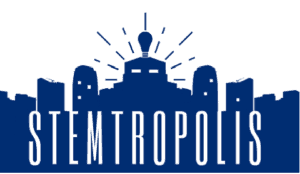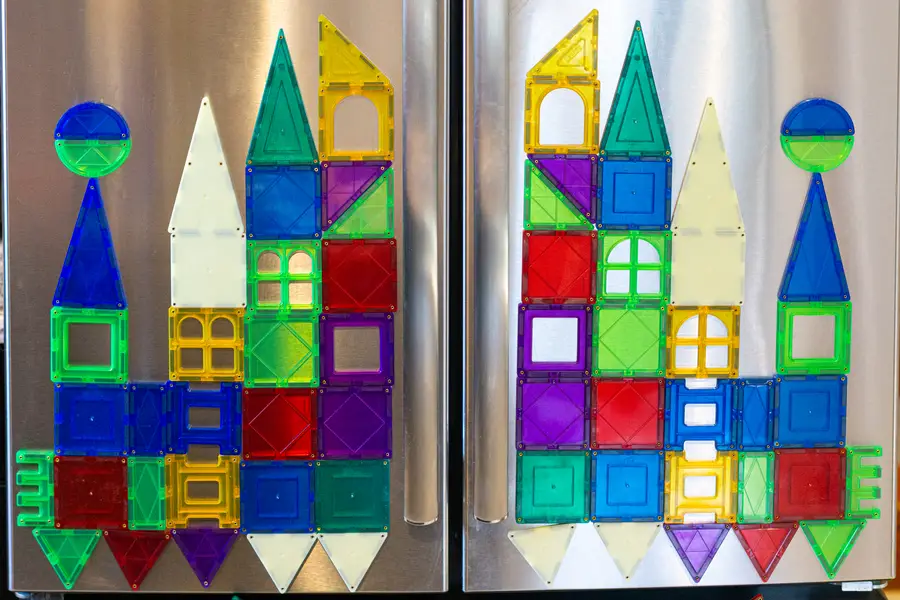Math is often thought of as a dry and boring subject though, when looks at with proper perspective, math can be fun and creative too! Math art projects are a great way for kids to explore math concepts in a hands-on and engaging way. Today we’re digging into some fun math art projects that kids can enjoy.
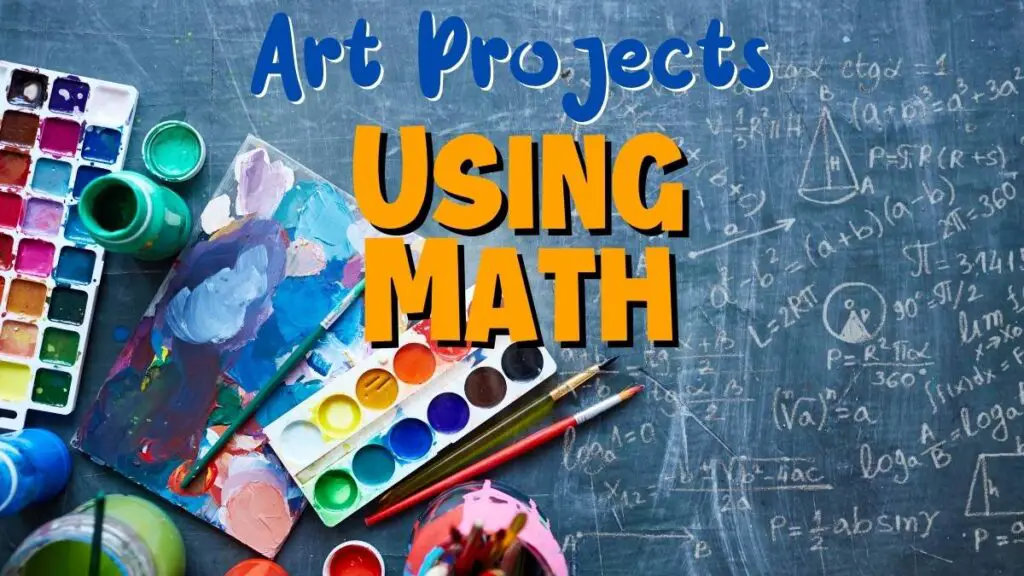
*We’re an affiliate – we may earn a commission through qualifying purchases from the links on this page. As always, thanks!*
These projects are designed to help kids practice their math skills while also exercising their creativity and imagination. Whether you are a parent looking for ways to make math more fun for your child or a teacher looking for engaging math activities, this article will provide you with some ideas for fun math art projects that kids will love. Let’s explore!
Geometric Collages
You can create interesting art using little more than geometric shapes such as circles, squares, and triangles. Elements like size and colors of the shapes can help make a piece unique and interesting.
Materials needed:
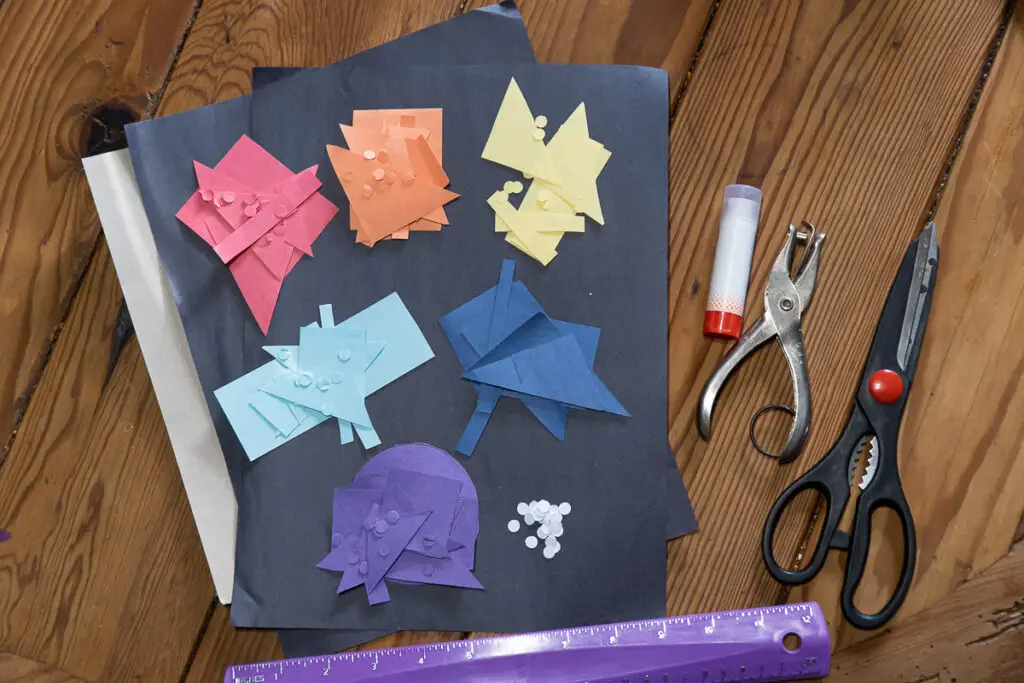
- Cardstock or construction paper
- Scissors
- Glue
- colored paper
- Ruler
- Compass (if your want help making circles)
Start by cutting out different shapes (circles, triangles, squares, etc.) from the colored construction paper or using the markers to draw them on the cardstock.
Use the ruler to help make strait edges. A compass will be handy to help make circles. If you don’t have a compass, you can trace a can or a cup.
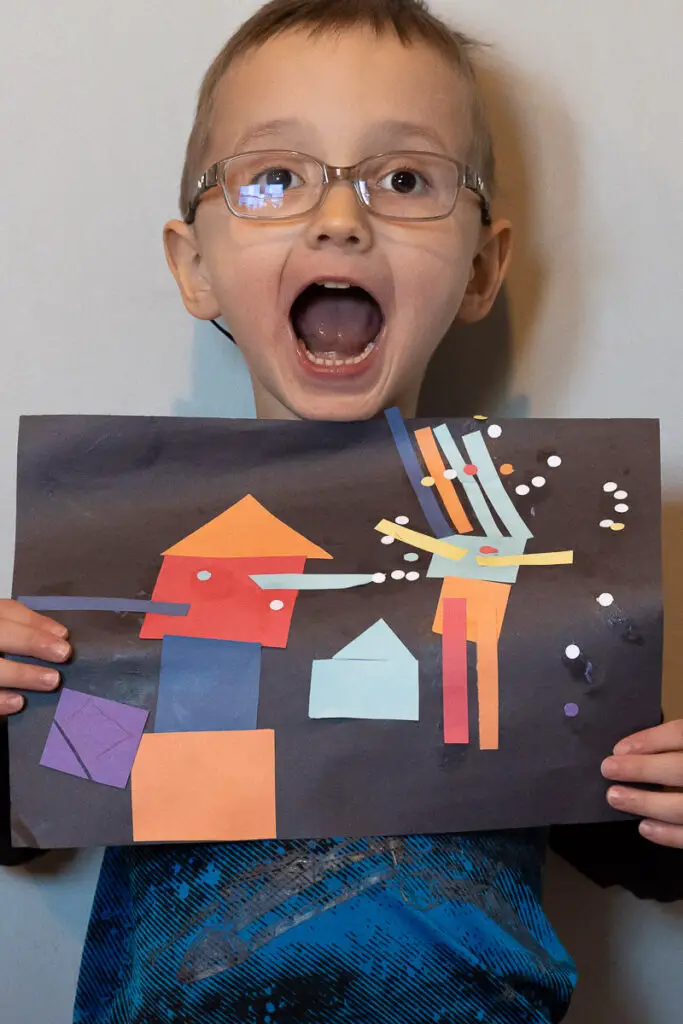
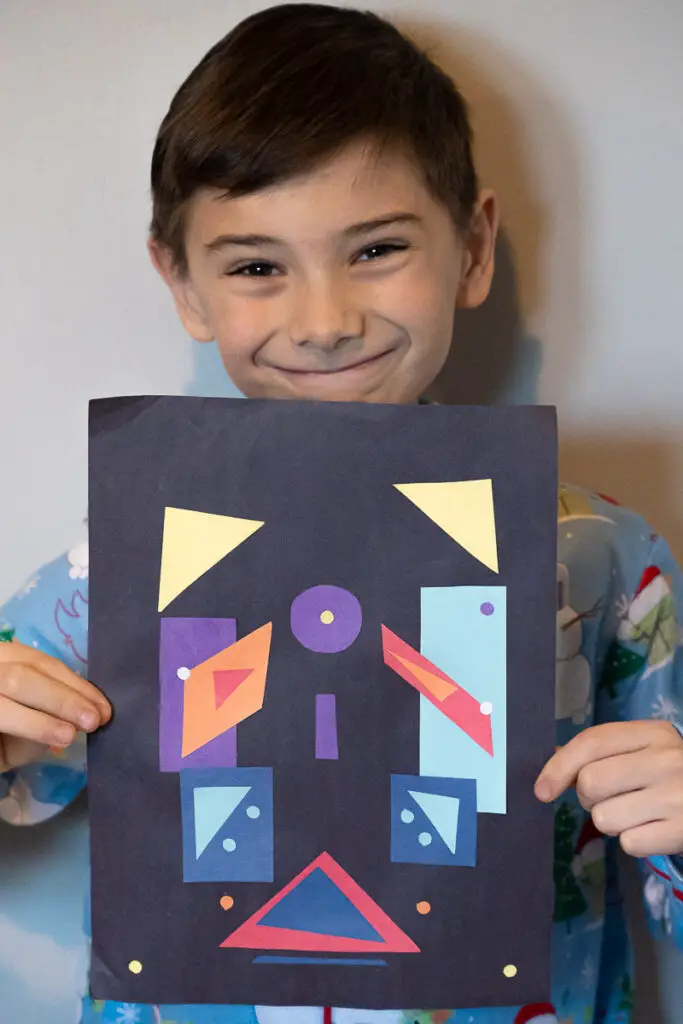
Arrange the shapes on the cardstock in a way that creates a pleasing composition. Think about concepts like balance, symmetry, and proportion as you’re placing your shapes. You can use concepts like the rule of thirds or the golden ratio to help.
Related Post: Math Concepts used in Art
Geometric Drawings and Paintings
If cutting and pasting shapes aren’t your style, you can simply draw or paint. You can use markers, crayons, paint, pastels, etc. to color in your shapes if you prefer that to cutting out colored paper.
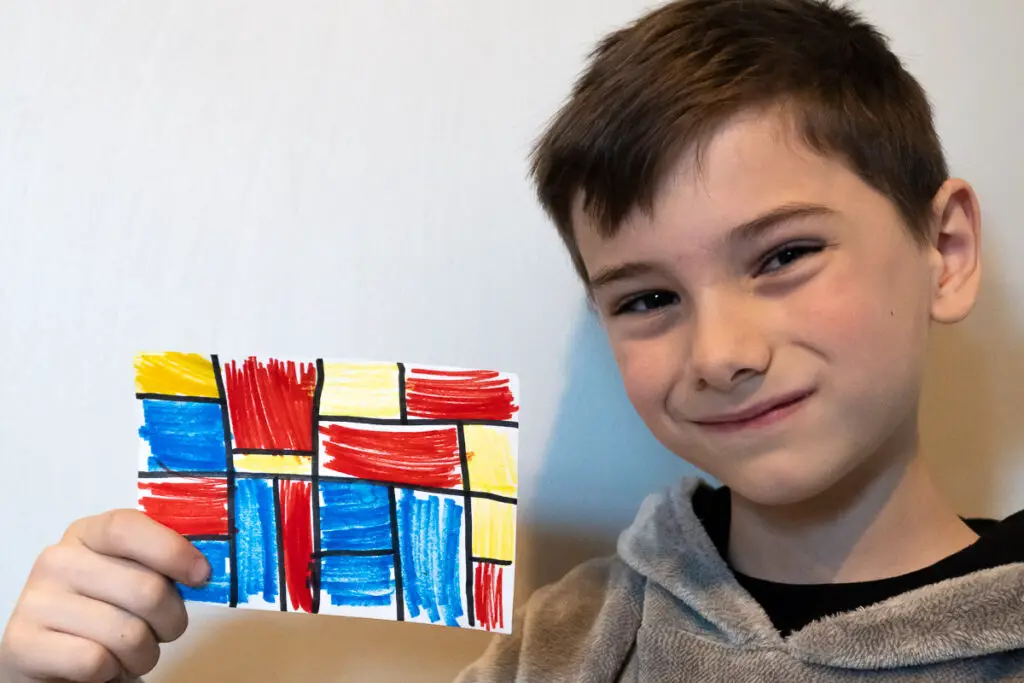
Your project can be as simple as using bold lines and colored boxes, which makes for a perfect quick art project without much prep. If you don’t know where to start, you can use the work of influential Dutch painter Piet Mondrian as inspiration.
Geometric Cityscapes
For something less abstract, try using Paul Klee’s cubism castles as inspiration for your own geometric cityscapes.
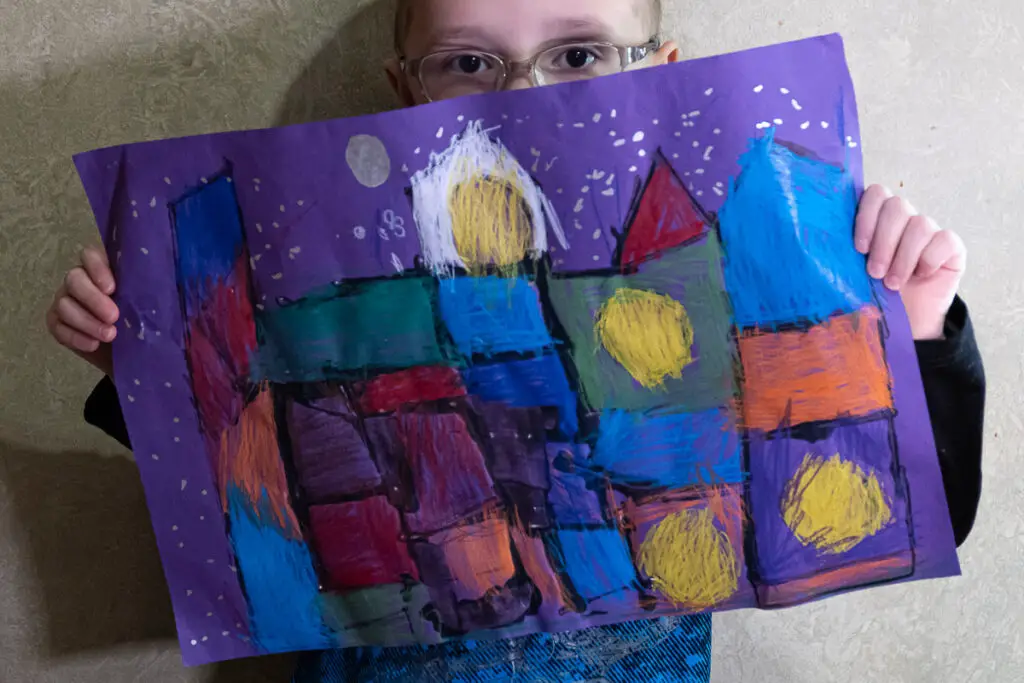
Take a look at cityscapes or buildings and notice the shapes. You can use shapes and compositions like this in your own artwork. Start by trying to recreate the skyline of a famous city, or let just your imagination guide you. The coolest thing about art is that you can’t do it wrong!
Can you imagine a city from the future or ancient past? How about a city from another dimension with different rules for how geometry or physics work. (check out M.C. Escher if you want to venture into non-Euclidian or hyperbolic geometry!)
Art Challenge: Try making a Paul Klee style cityscape with Magnatiles! You can use a variety of shapes to build your masterpiece.
Tangram Puzzle Designs
Tangram puzzles are ancient Chinese puzzles that consist of seven flat pieces that can be rearranged to form a square. Kids can create their own tangram puzzles by cutting out the pieces from paper or cardboard.
Using tangram puzzles, kids can practice their geometry skills while also creating their own designs.
To make a DIY tangram puzzle, you will need:
- Cardboard or thick paper stock
- A pencil
- A ruler or straight edge
- Scissors
Instructions:
- Cut a square piece of cardboard or thick paper to the desired size for your puzzle.
- Using a ruler and pencil, divide the square into seven pieces: two small squares, one medium square, two parallelograms, and two right-angled triangles.
- Carefully cut out each piece with your scissors.
- Once all the pieces are cut out, they can be painted or decorated as desired.
- Build designs you like and glue them onto cardstock or poster board to make a painting or scene
Tangram Challenge: create a list of items to create using the Tangram pieces, and see who can come up with the coolest design. Try making a bear, a rocket, a bird, or a house to get started. Let your imagination be your guide – the best part is, there are no wrong answers!
See if you can create these figures:
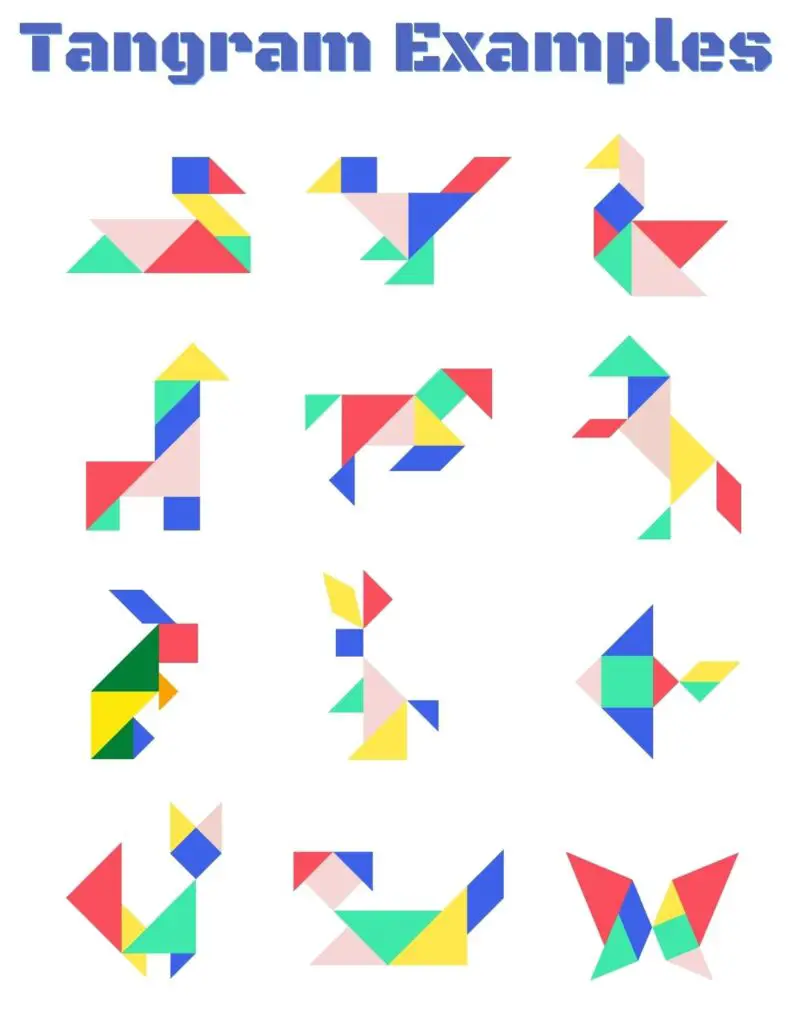
You can find a whole selection of Tangrams to build here
You can download our free Tangram template to get started quickly.
Symmetry Drawing
Using symmetry as a guide, you can create your own unique drawings that incorporate math concepts into art projects. The idea is to make a piece of art that looks like a mirror image from a centerline. You can use a grid to guide you.
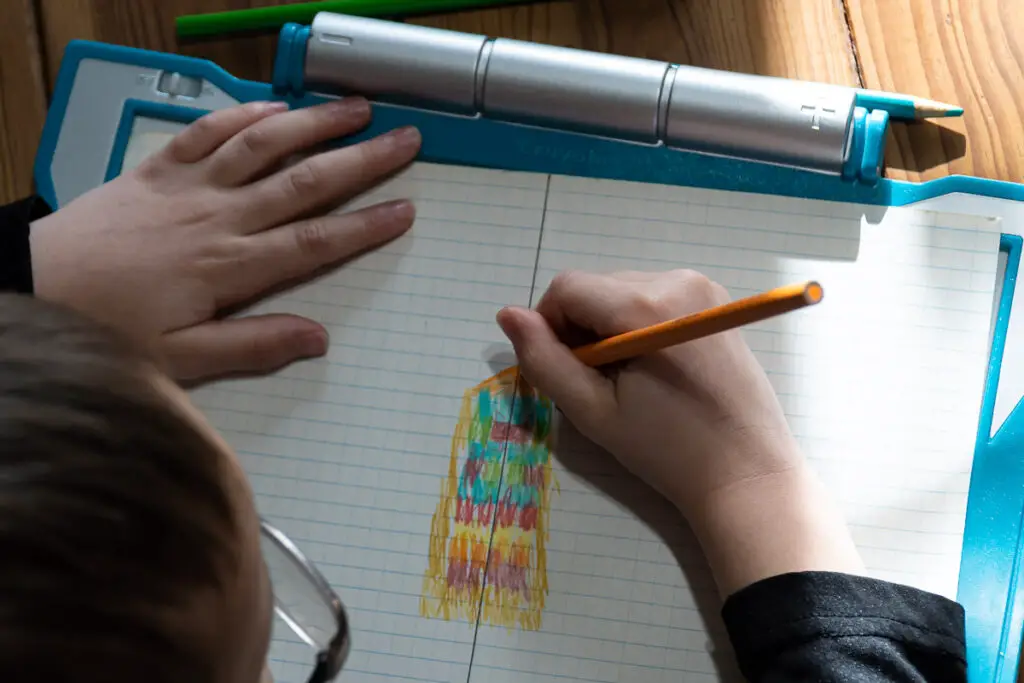
Materials needed:
- Drawing paper or Graph paper
- rulers
- drawing materials (markers, crayons, or watercolors).
Start by drawing a line of symmetry down the center of their paper. This line will serve as a guide to create a drawing that is symmetrical on both sides. You can make additional lines horizontally or vertically to create a grid to use a a guide to keep your spacing equal on both sides.
Make lines and shapes on both sides of the center line, matching design and colors one each side. Use your grid lines or your ruler to measure distance from the centerline and edges of the paper to keep both sides the same. One side should be a mirror image of the other. Remember to think about to think about balance and proportion.
Using graph paper makes it easier to create symmetrical drawings, as you can count the squares to help keep both sides even. Another approach would be to use a light box or tracing pad to show you the grid lines without folding or marking up the paper you’re drawing on.
If you like symmetry projects, check out our Activities with Magnet Tiles, where we used the tiles to create symmetrical patterns on our refrigerator.
Symmetry Painting
The concepts are the same as our symmetry drawing, except we’re going to let the paint do much of the work for the symmetry part. We’re going to create a finished painting that looks like a mirror image. You’ll need paint supplies and something to paint on:
- Acrylic Paints
- Brushes
- Paper, card stock, or fabric
- Imagination!
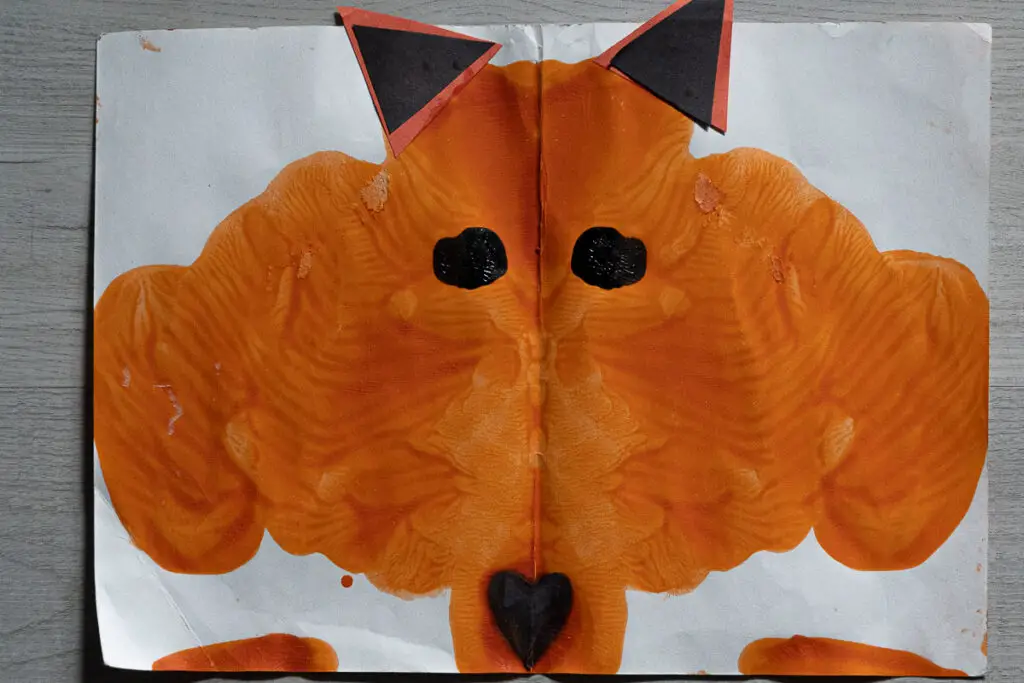
- Fold your paper or card stock in half to find the centerline (note you can make your fold either vertically or horizontally, depending on what look you’re going for.)
- Paint on one half of your paper, making your design to one half of the centerline
- When you’re done painting, fold it in half and press the paint on the blank half
- Carefully unfold your painting, peeling it apart
- Allow the paint to dry
You should have a mirror image symmetrical painting when you’re done!
Tessellation Art
Incorporating math into art often involves creating patterns using shapes. Tessellations are patterns made up of repeating shapes that fit together without gaps. Kids can create tessellation art by drawing or coloring in repeating shapes on a piece of paper (or canvas, cardboard, etc.)
Tessellations are a great way to combine math and art for kids, letting kids explore shapes, symmetry, and patterns while also allowing them to express their creativity.
To create tessellation art:
- Start by drawing or coloring in a simple shape on a piece of paper or cardstock (we used an empty cereal box – it’s easier to cut than heavy cardboard and easier to trace than a paper cutout – plus, the kids just finished a box of cereal!)
- Cut out your shape
- Trace your shape on the paper.
- Line up your cutout on the shape you just traced and trace it again
- Use your cutout to line up and trace shapes until you fill up your paper
- Color in the shapes
Alternately, you can trace and cut out your shapes from construction paper and glue them together in a repeating pattern.
If you want some tessellations to color or use for inspiration, check out our Tessellation Coloring Pack.
Artist M.C. Escher used tessellation patterns in a number of his works that you can also use for ideas and inspiration:

Related Post: Check out these artists who use math for more examples of how math concepts can help shape a piece of art.
Fractal Art
Fractals are repeating patterns that can be found in nature, such as in the structure of a leaf or a tree. Kids can create their own fractal art by drawing or coloring in repeating patterns.
To get started, draw a simple shape such as a triangle or square. Then repeat the shape in different sizes and orientations to create a pattern. Try using a variety of colors to make your fractal art more interesting.
Once you’ve created you basic pattern, experiment with adding more complexity by changing the shapes and colors used. Think creatively and experiment with different techniques and materials to see what you can come up with!
Geometric Origami
Origami is the art of paper folding. You can create geometric shapes using origami techniques, or assemble shapes to build more complex pieces.
Geometric origami projects are easy enough for even young children to do, but can also be challenging enough for older kids who want to take their origami skills to the next level.
To get started with geometric origami, all you need is some paper and a few basic folding techniques. You can find plenty of tutorials online that will teach you the basics of origami folding. Once you have the basics down, it’s time to start exploring the world of shapes and angles.
One way to do this is by creating simple geometric shapes like squares, triangles, and hexagons.
To make a square, start by folding a piece of paper in half diagonally. Then fold the top and bottom corners to meet in the middle. Finally, unfold the paper and you’ll have a perfect square!
To make a triangle, start by folding one corner of the paper up to meet the opposite edge. Then fold the remaining two corners up to meet in the middle. Unfold the paper and you’ll have a perfect triangle!
These two simple shapes can be combined to create a variety of ways. For example, you can use a square and triangle to make a house or a rocket ship. You can use your origami shapes to create patterns, such as alternating squares and triangles or spirals.
Need some extra math practice? We’ve got some fun themed math worksheets in our printables shop. Check out the holiday themed worksheets, or grab some fun characters like dinosaurs or astronauts!
Wrap Up – Art Activities for Kids with Mathematical Concepts
Math art STEM activities and STEAM projects are a fun and creative way for kids to explore math concepts and be creative at the same time. Hopefully, you’ve made some beautiful designs and experienced first hand that math can be an important design element in art.
For further study, look at a piece of artwork and see if you can spot the math influences. We’ve highlighted some artists that use math in their art for you to to get some ideas.
Check out our STEM projects and STEAM activities for more ideas and find out why art is essential to STEM and STEAM!
